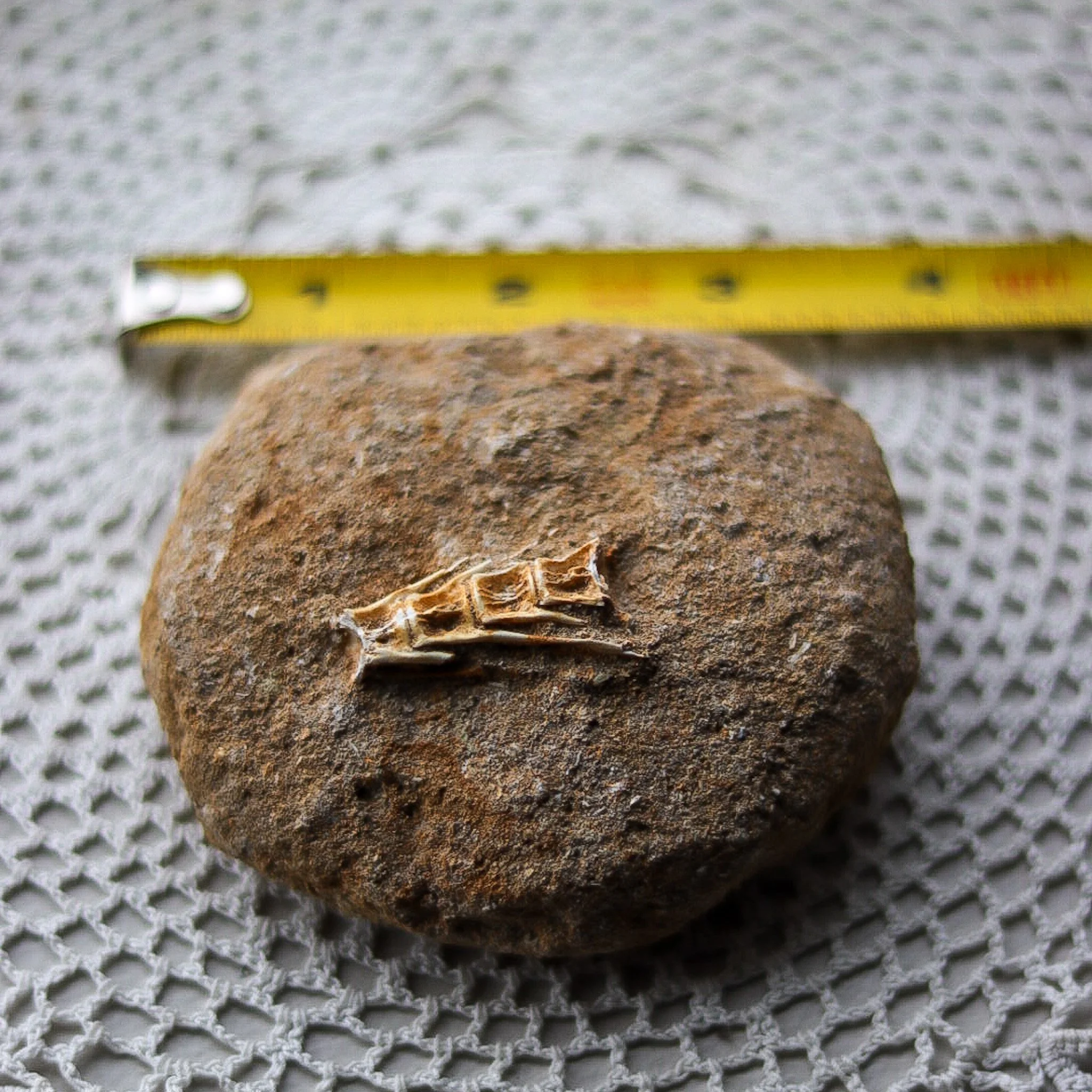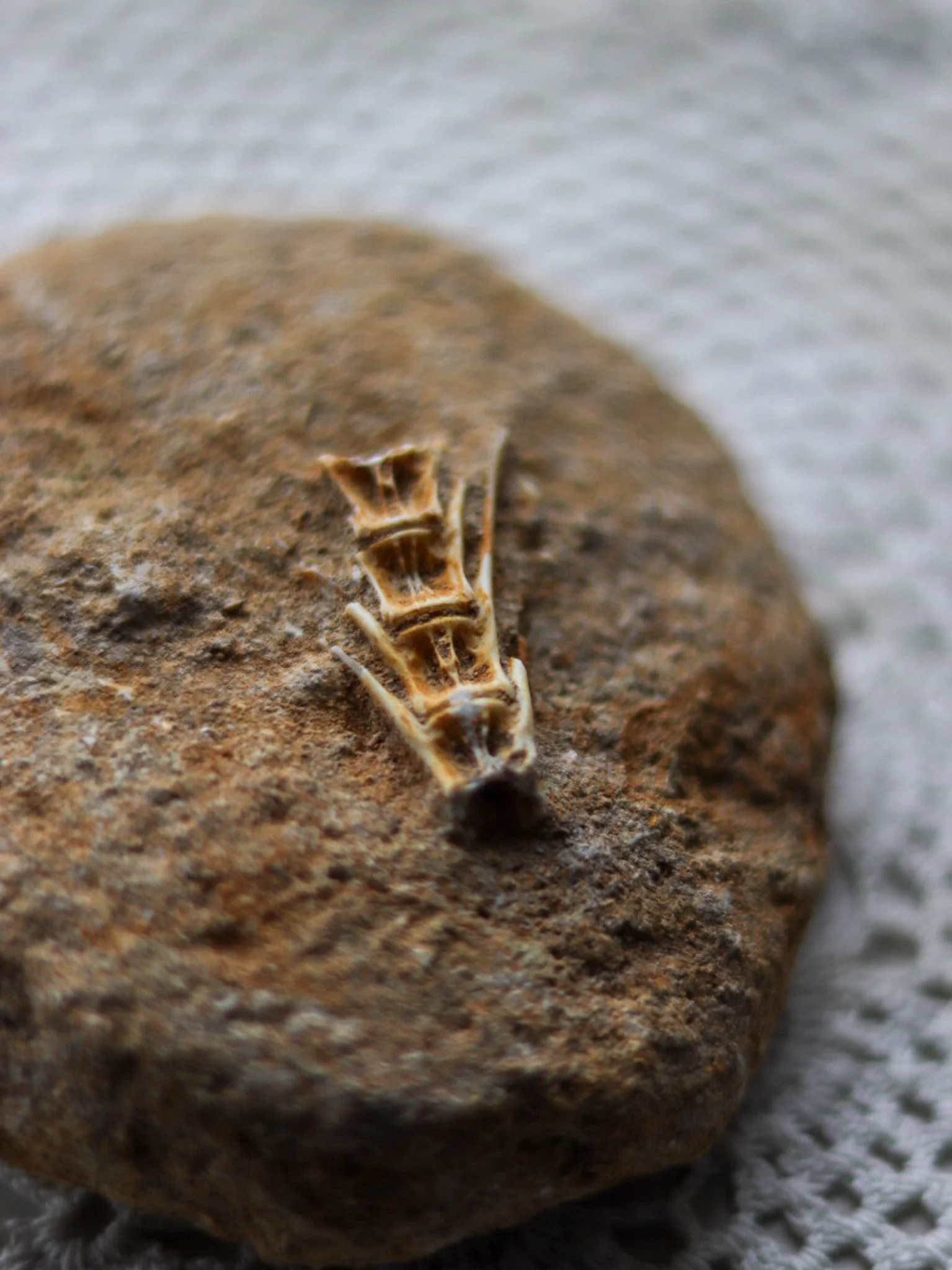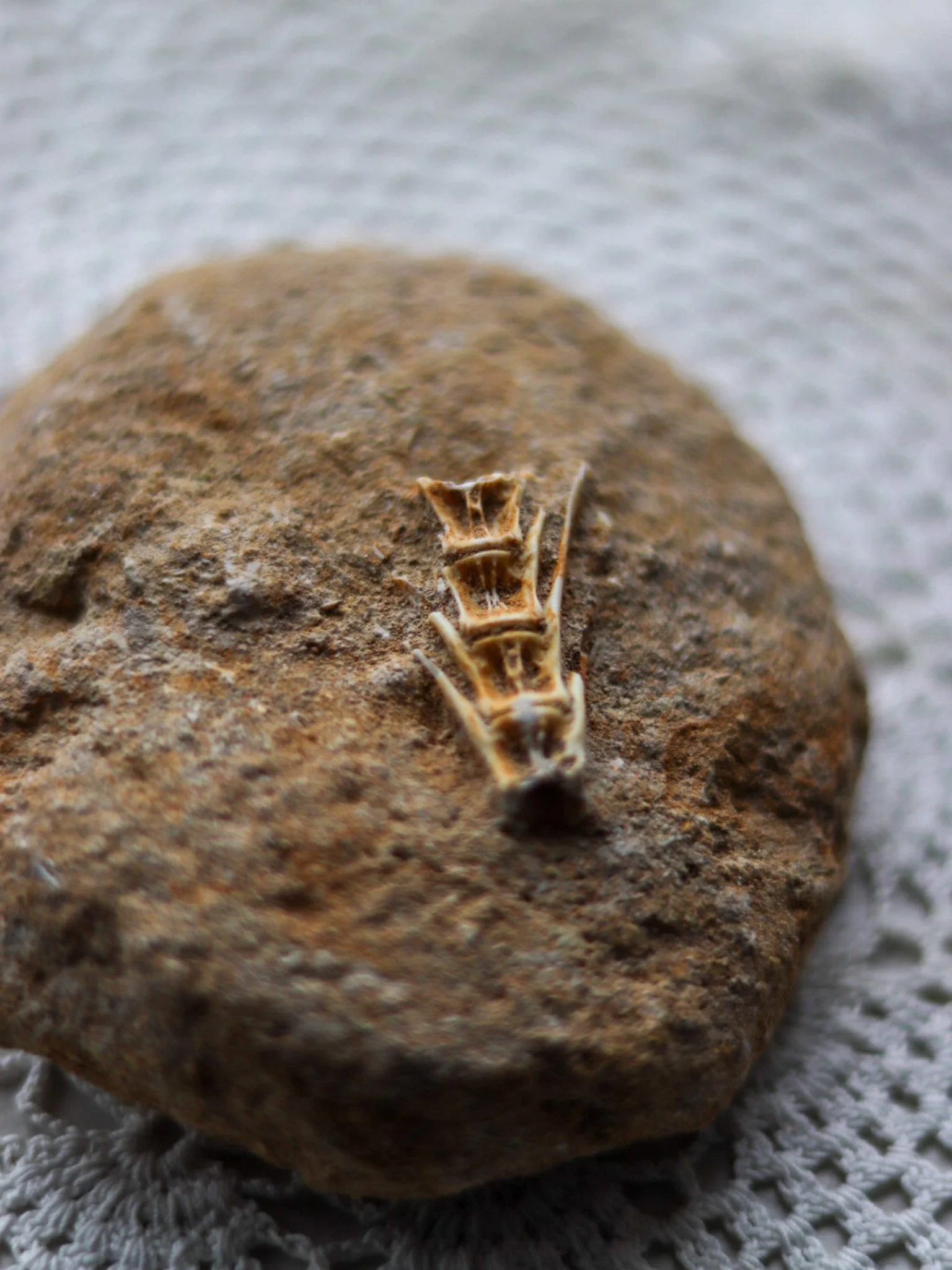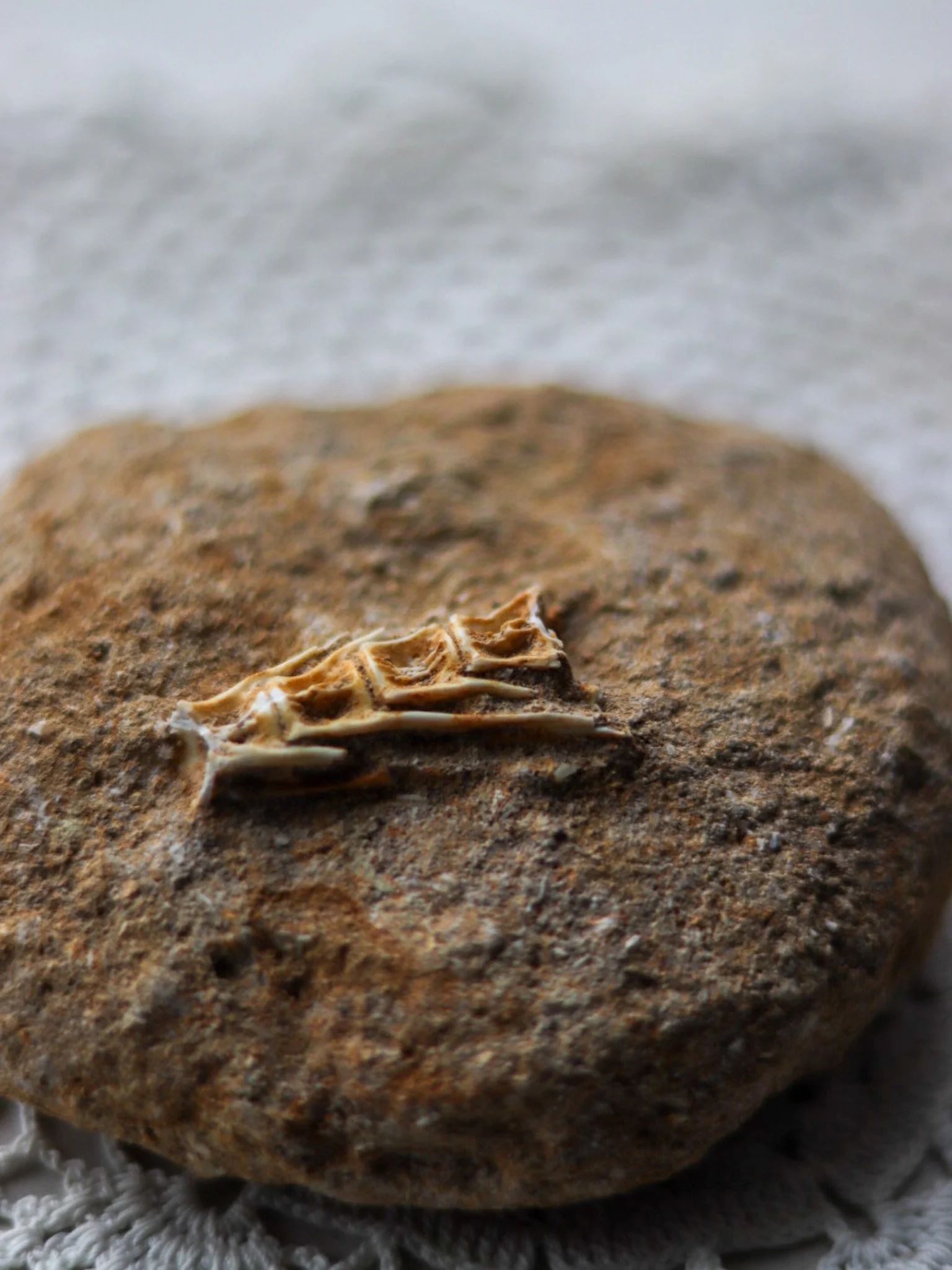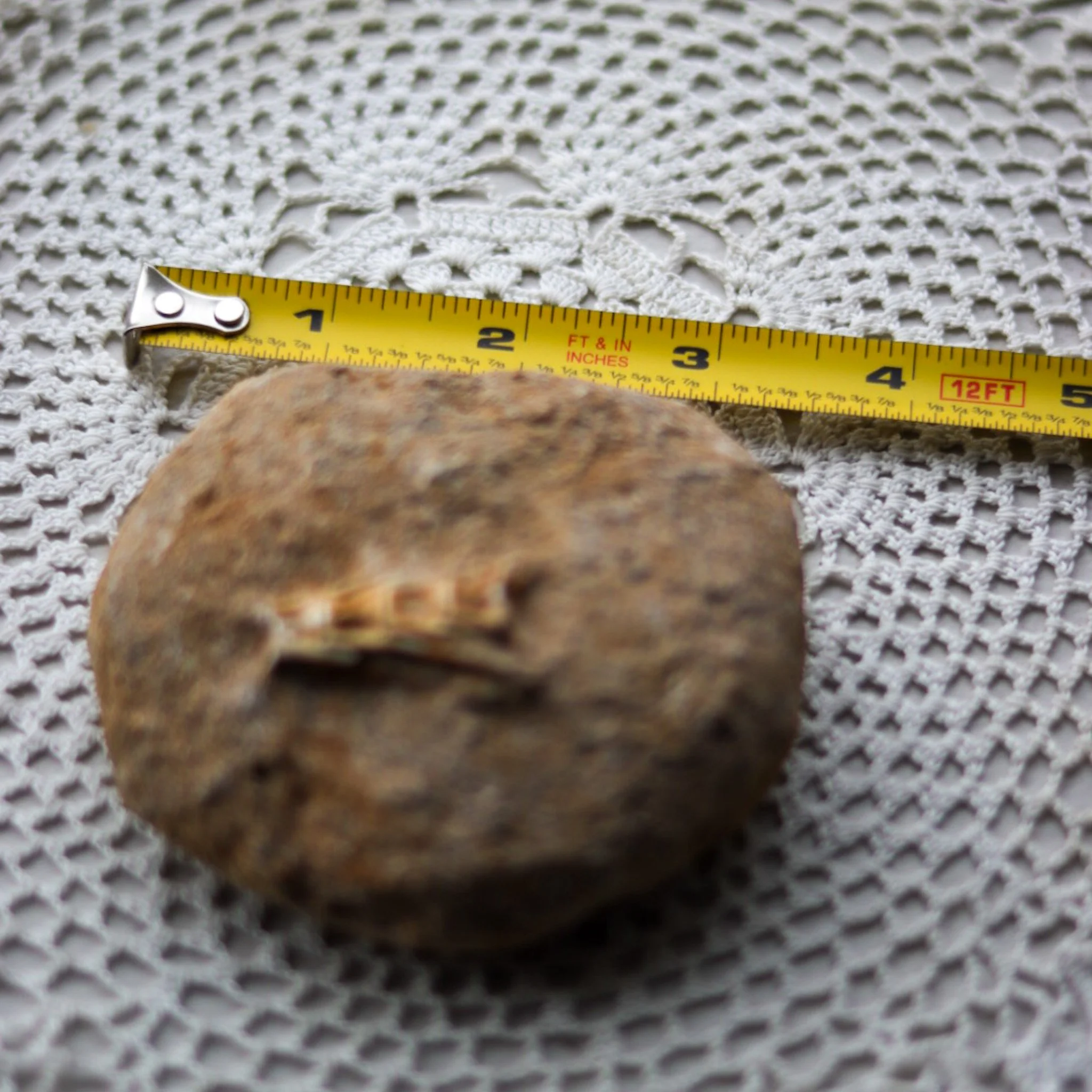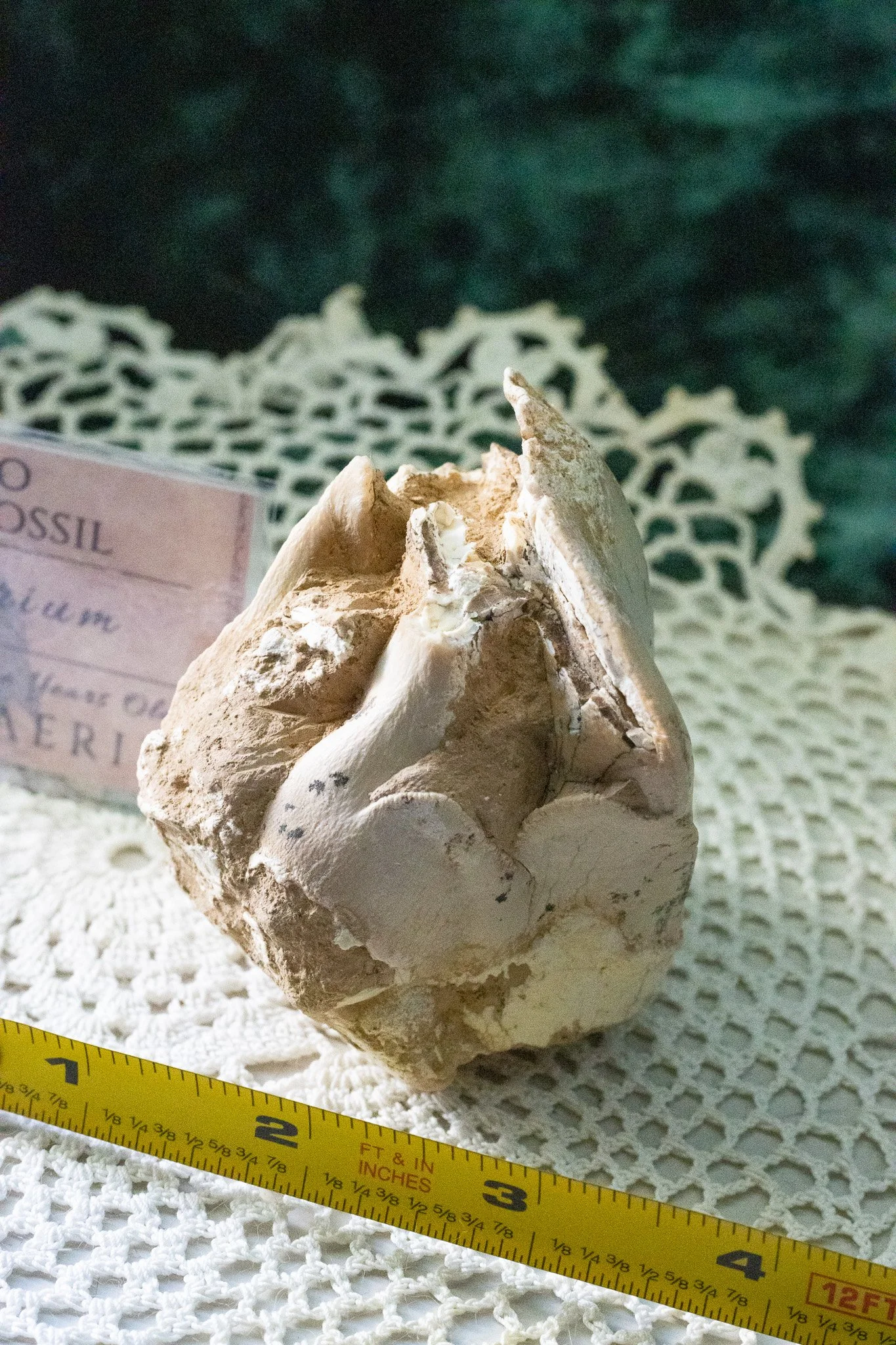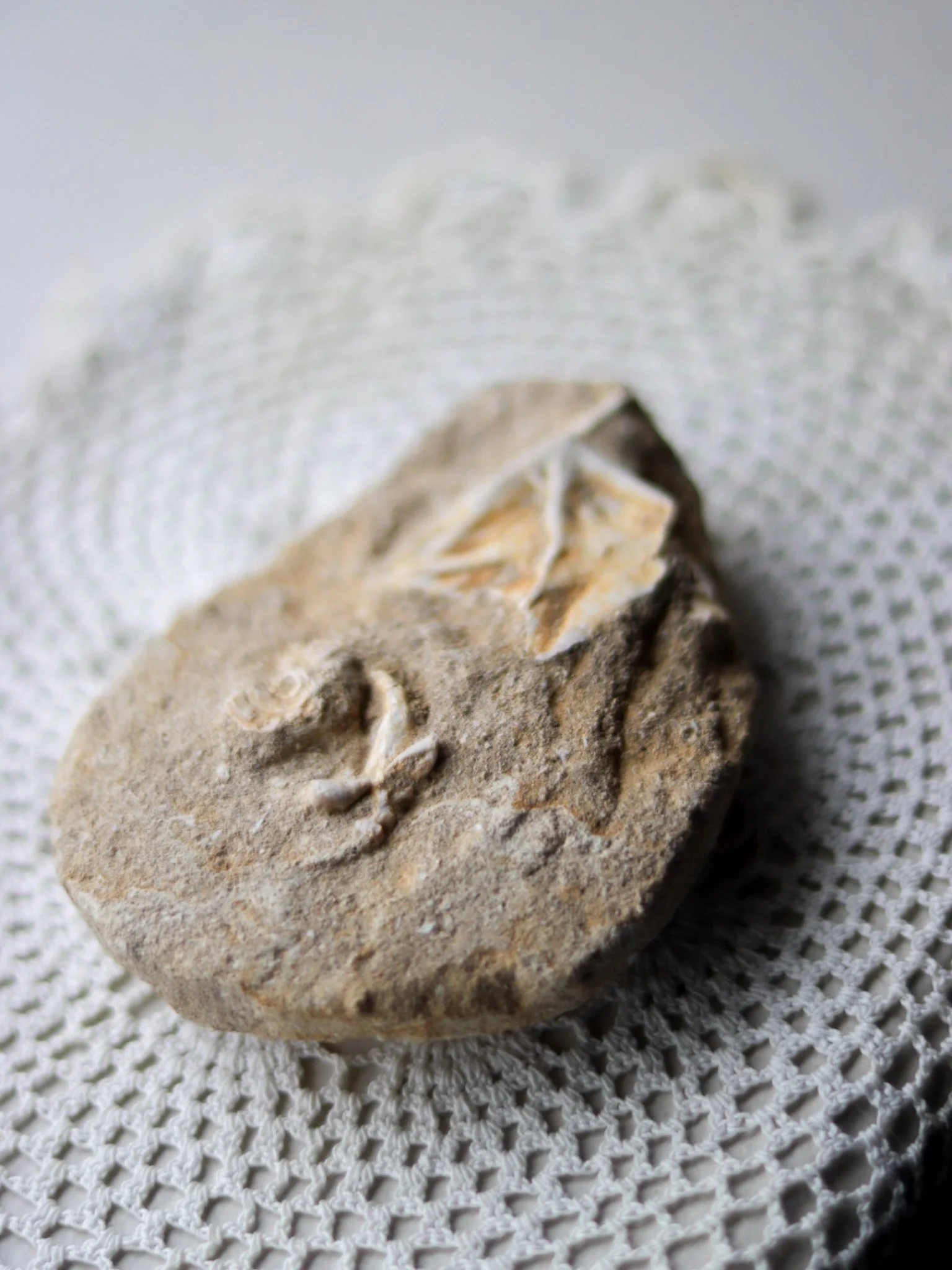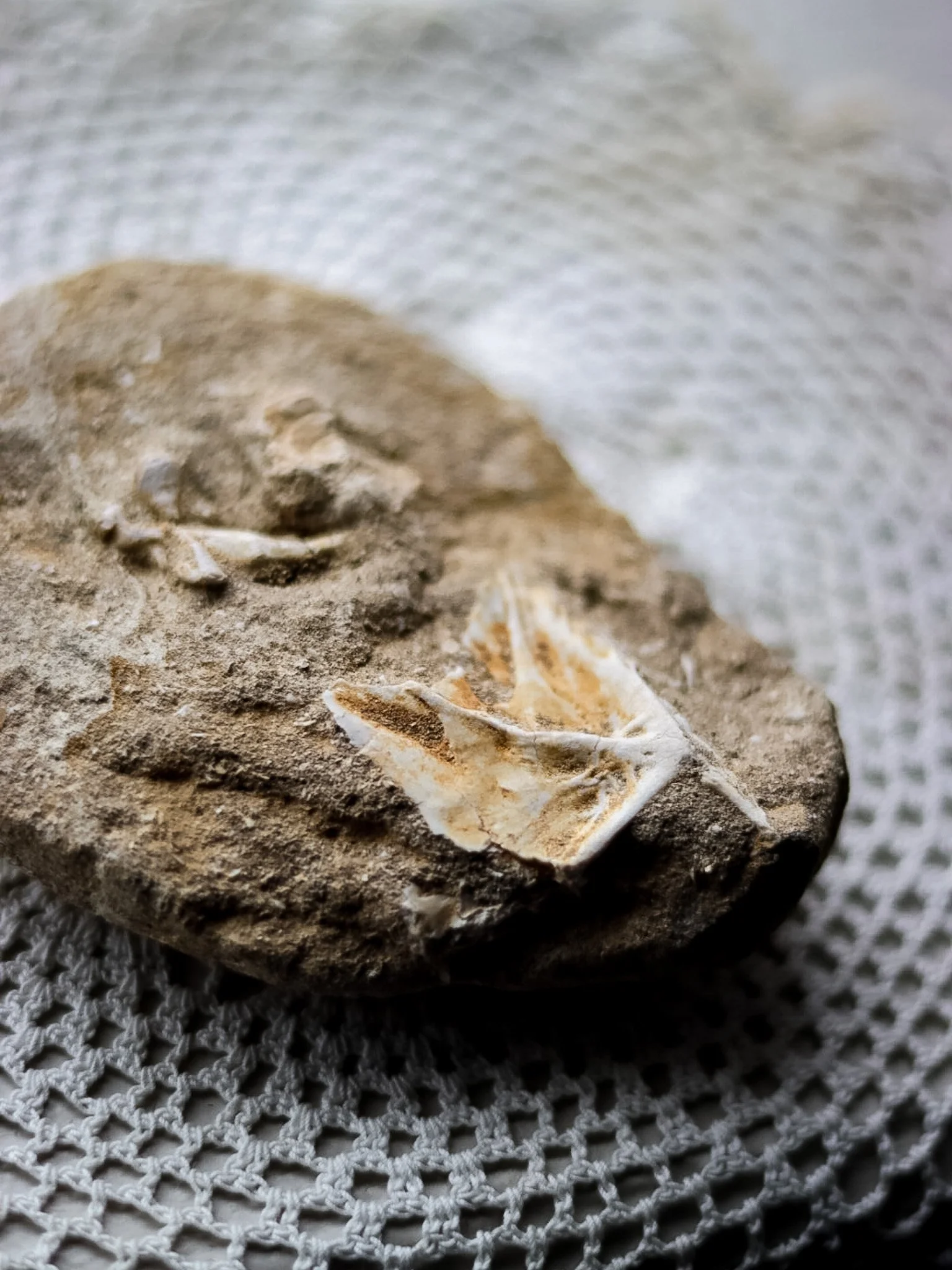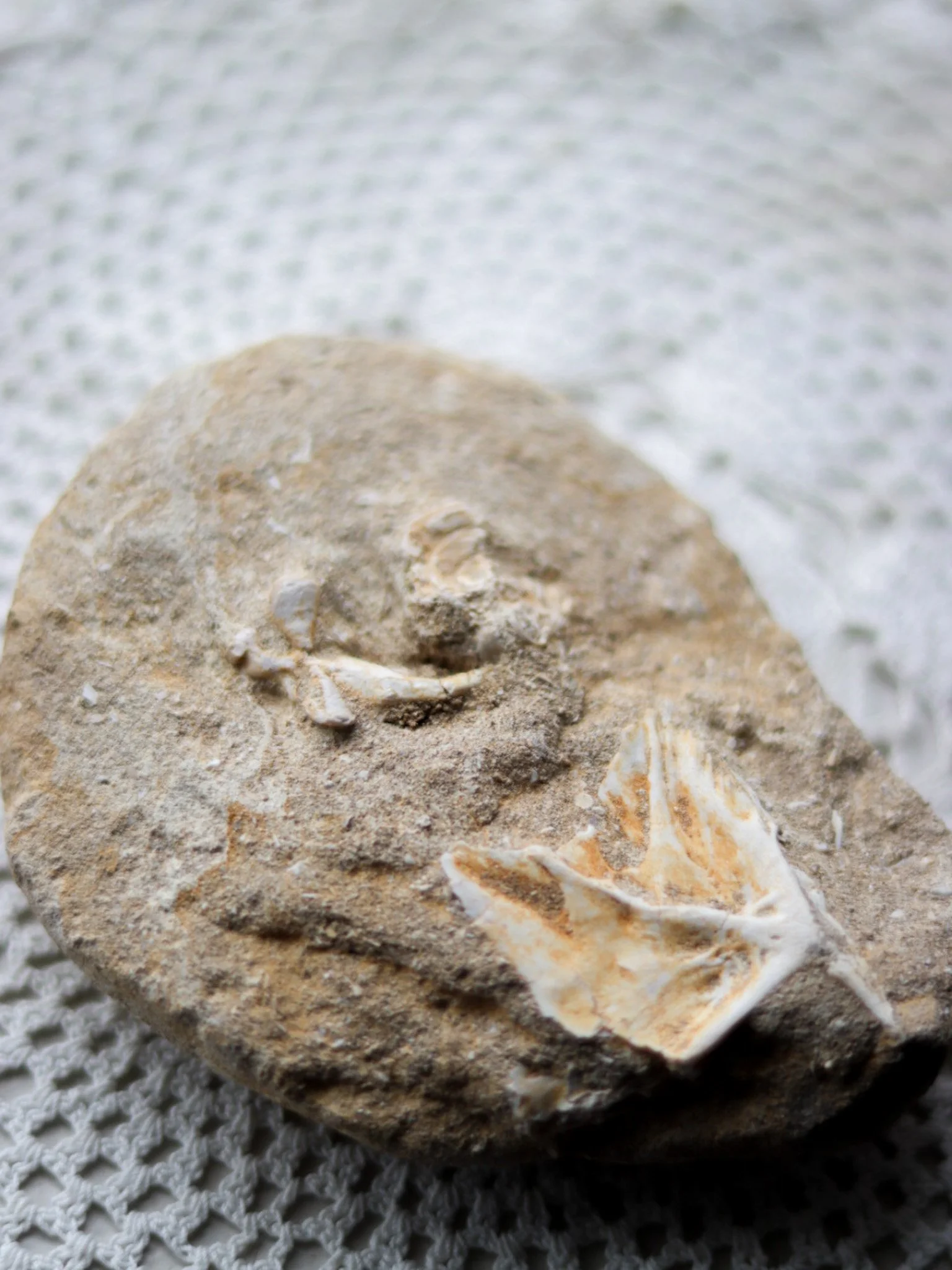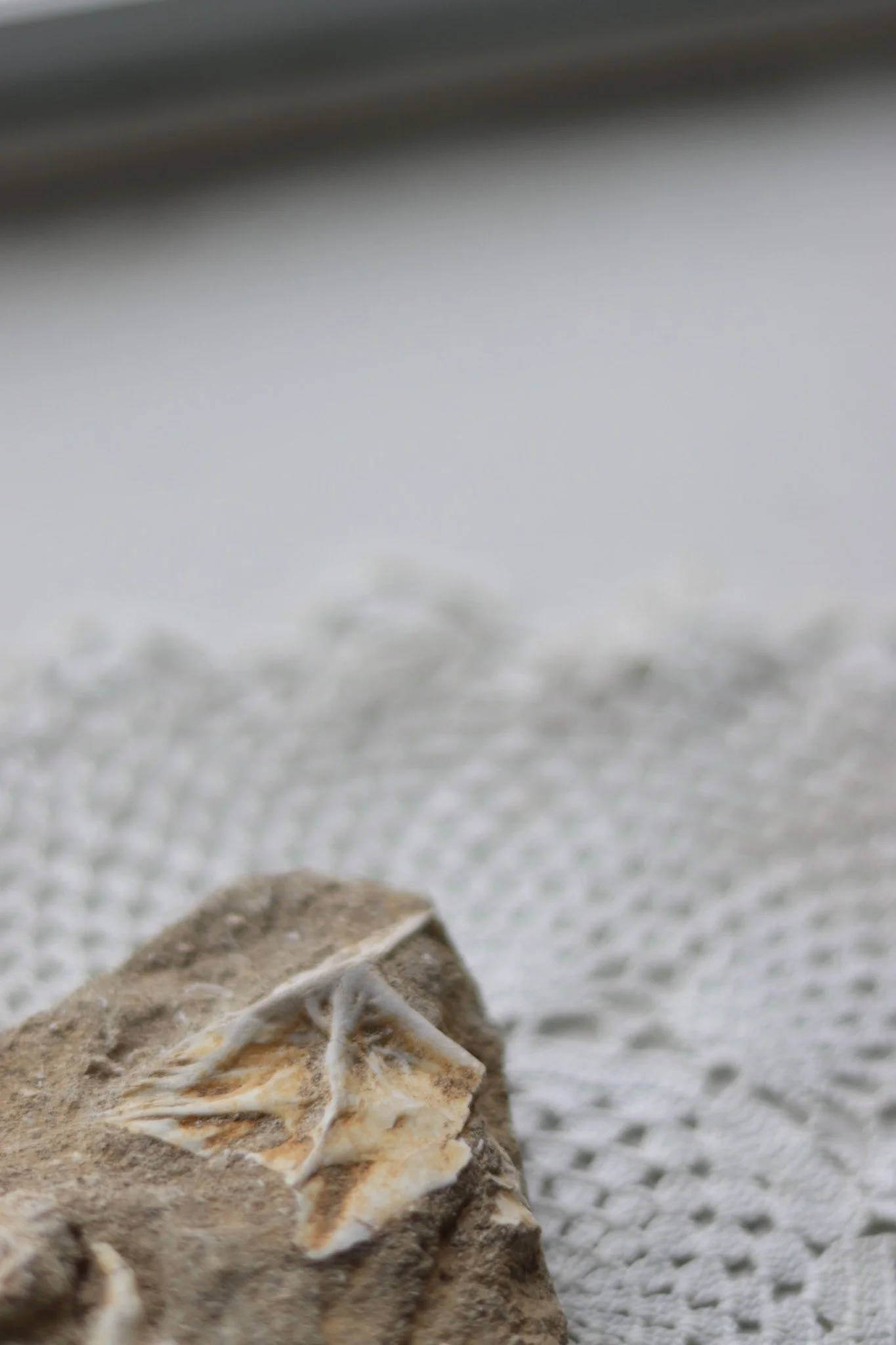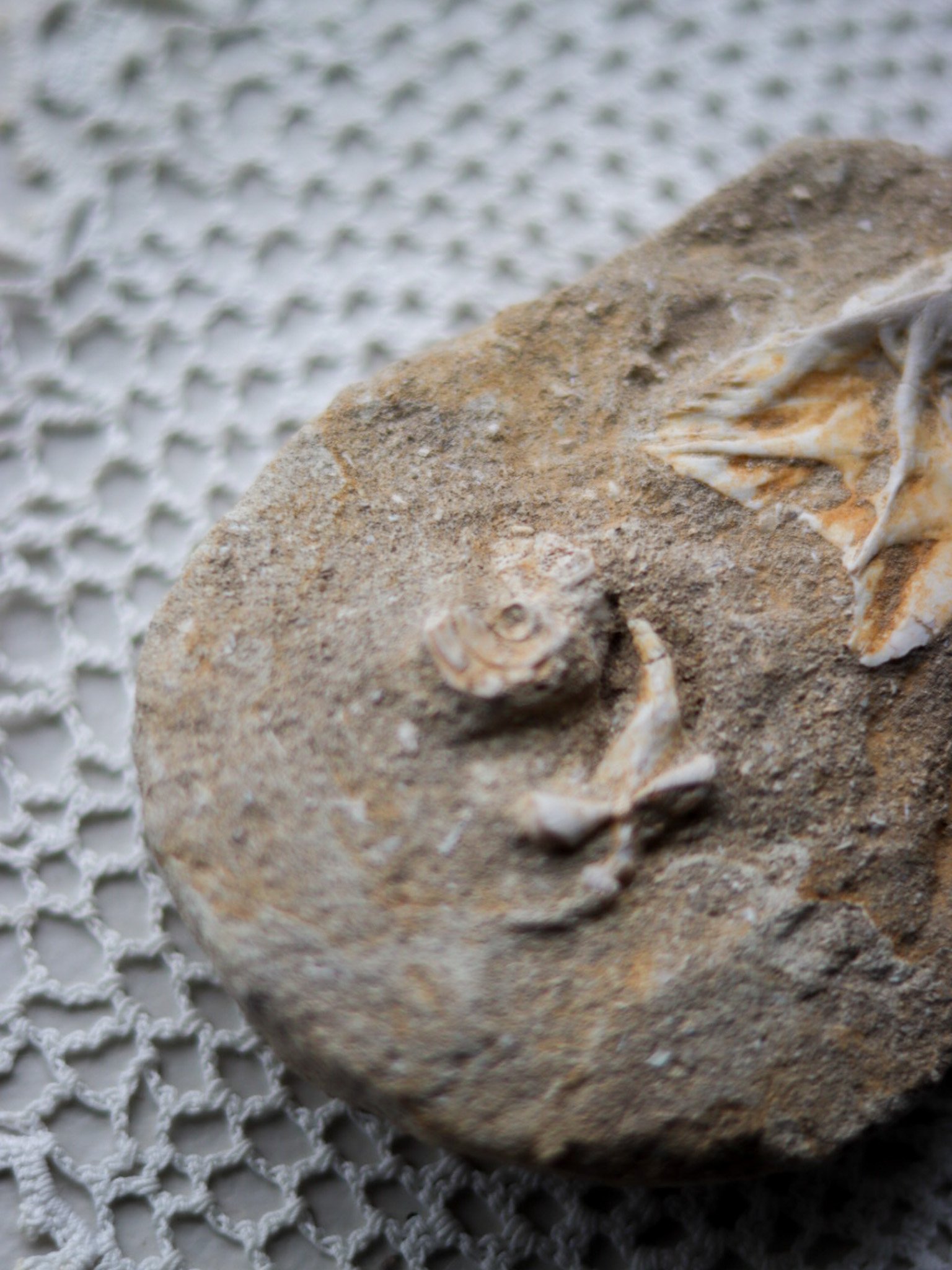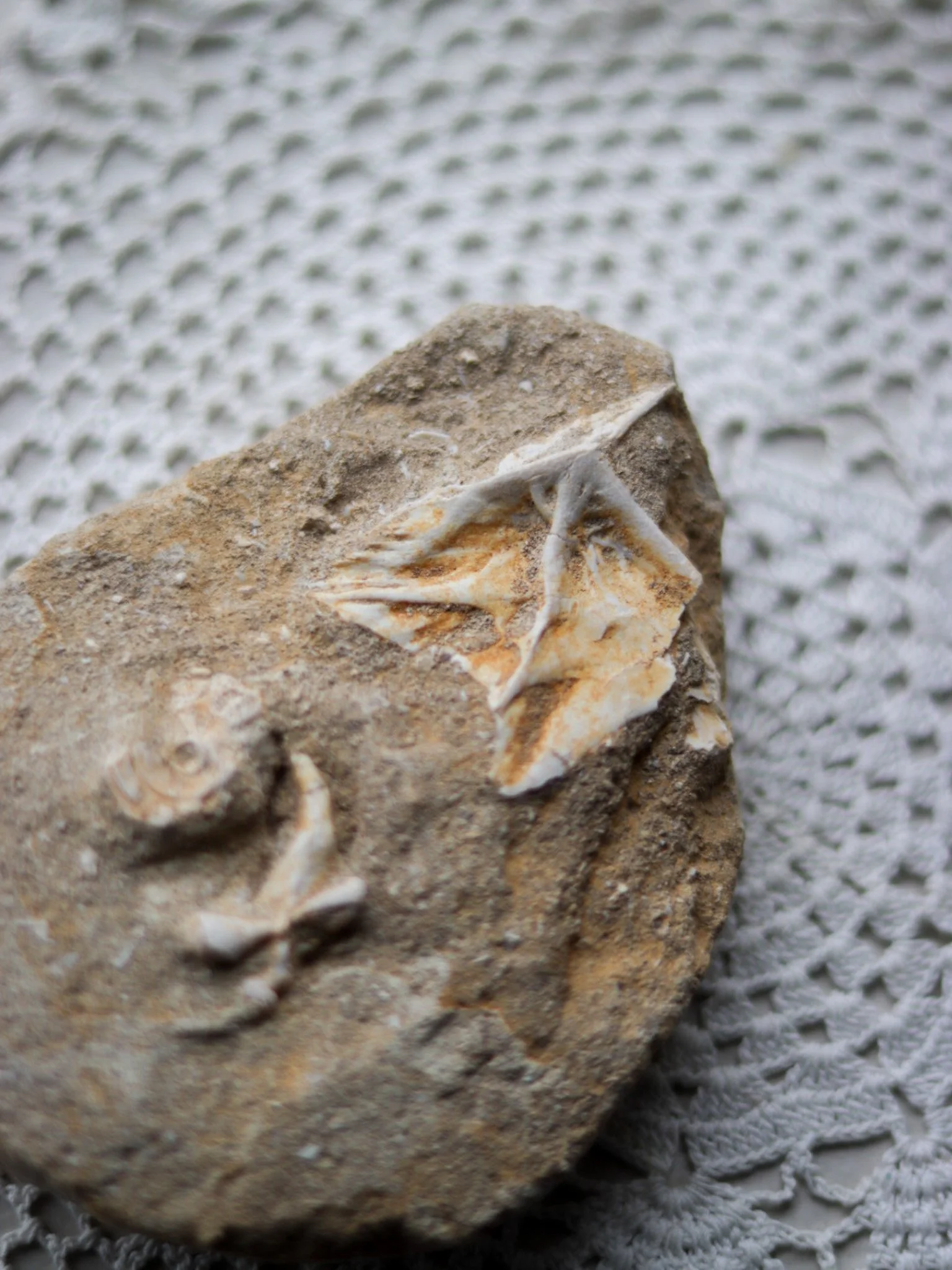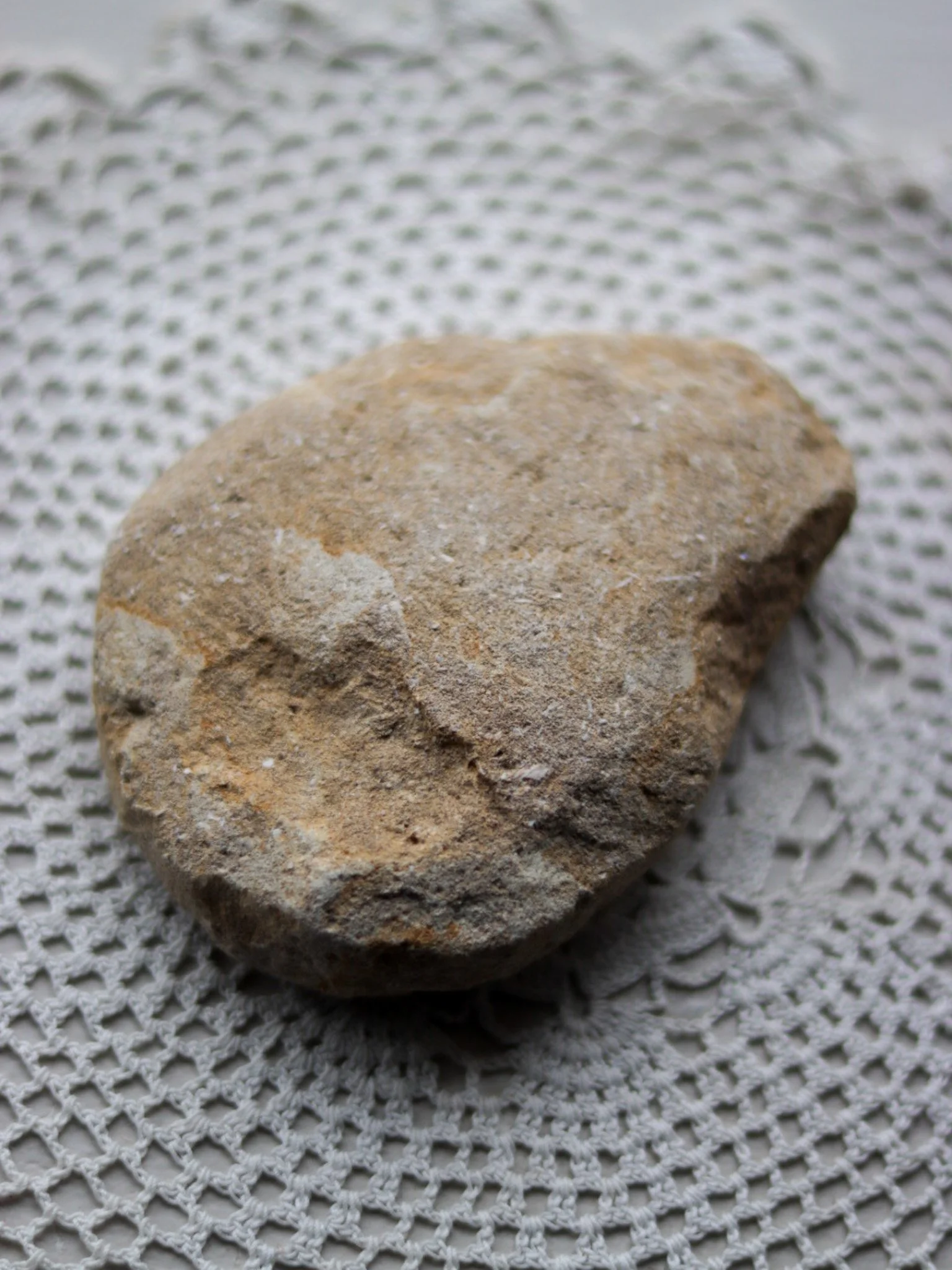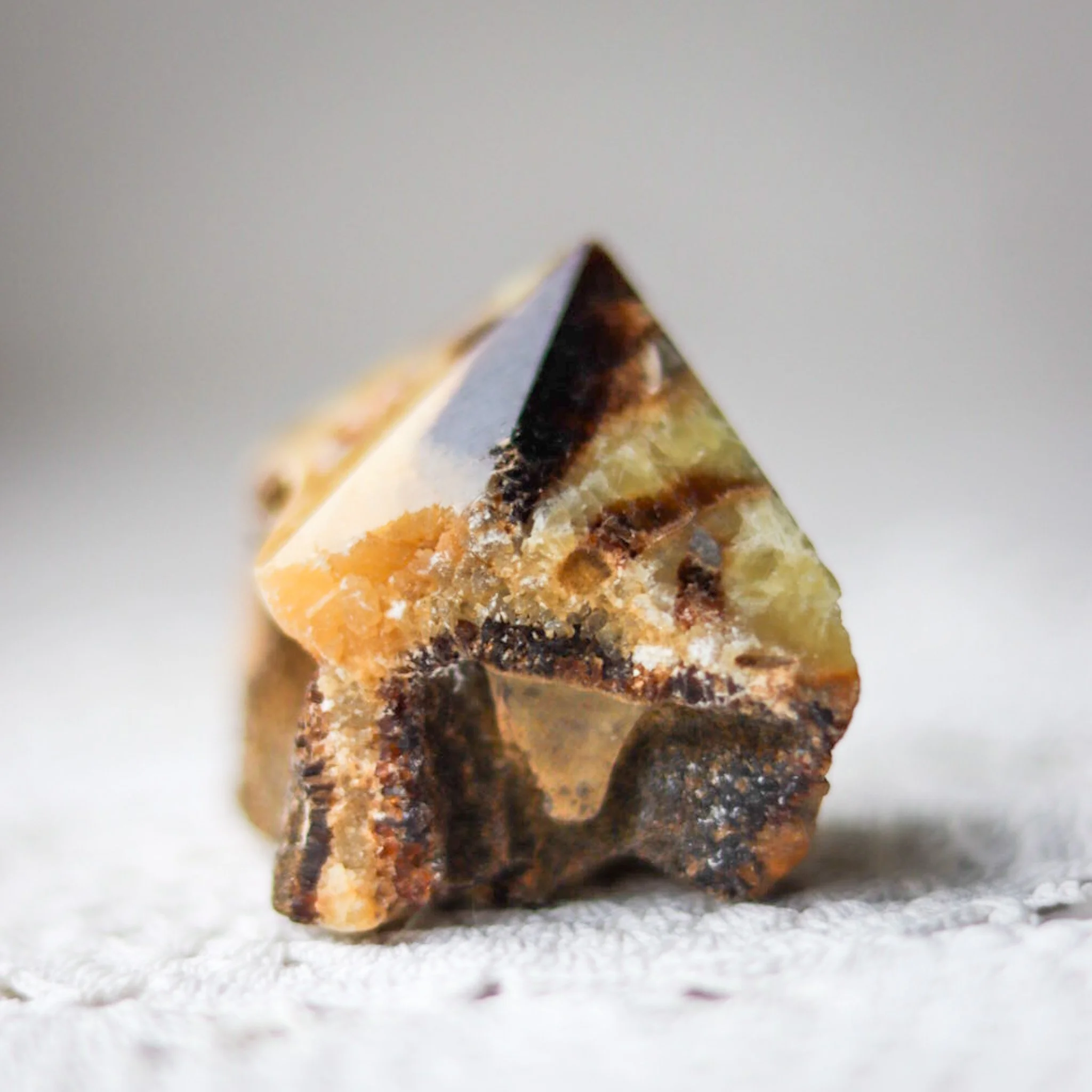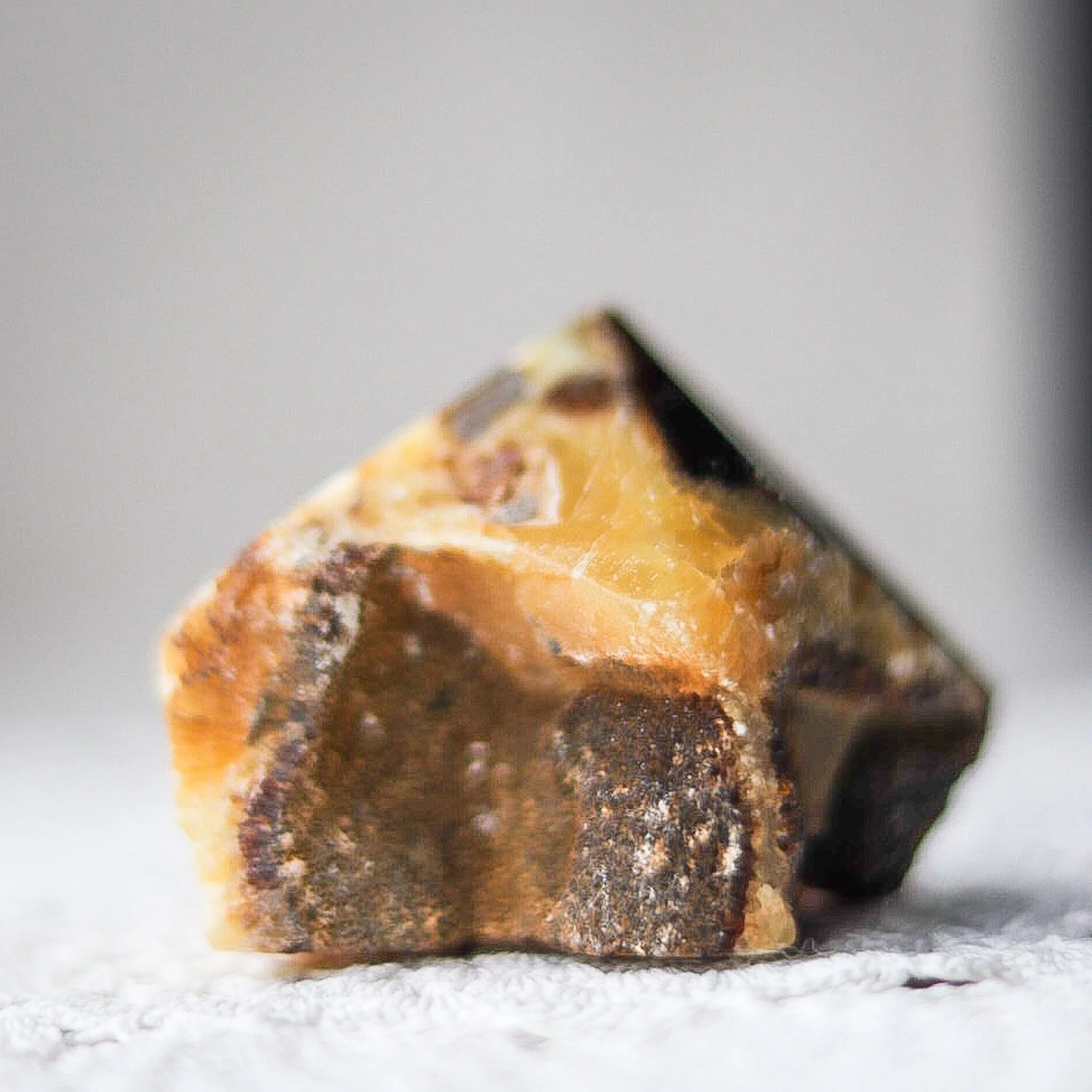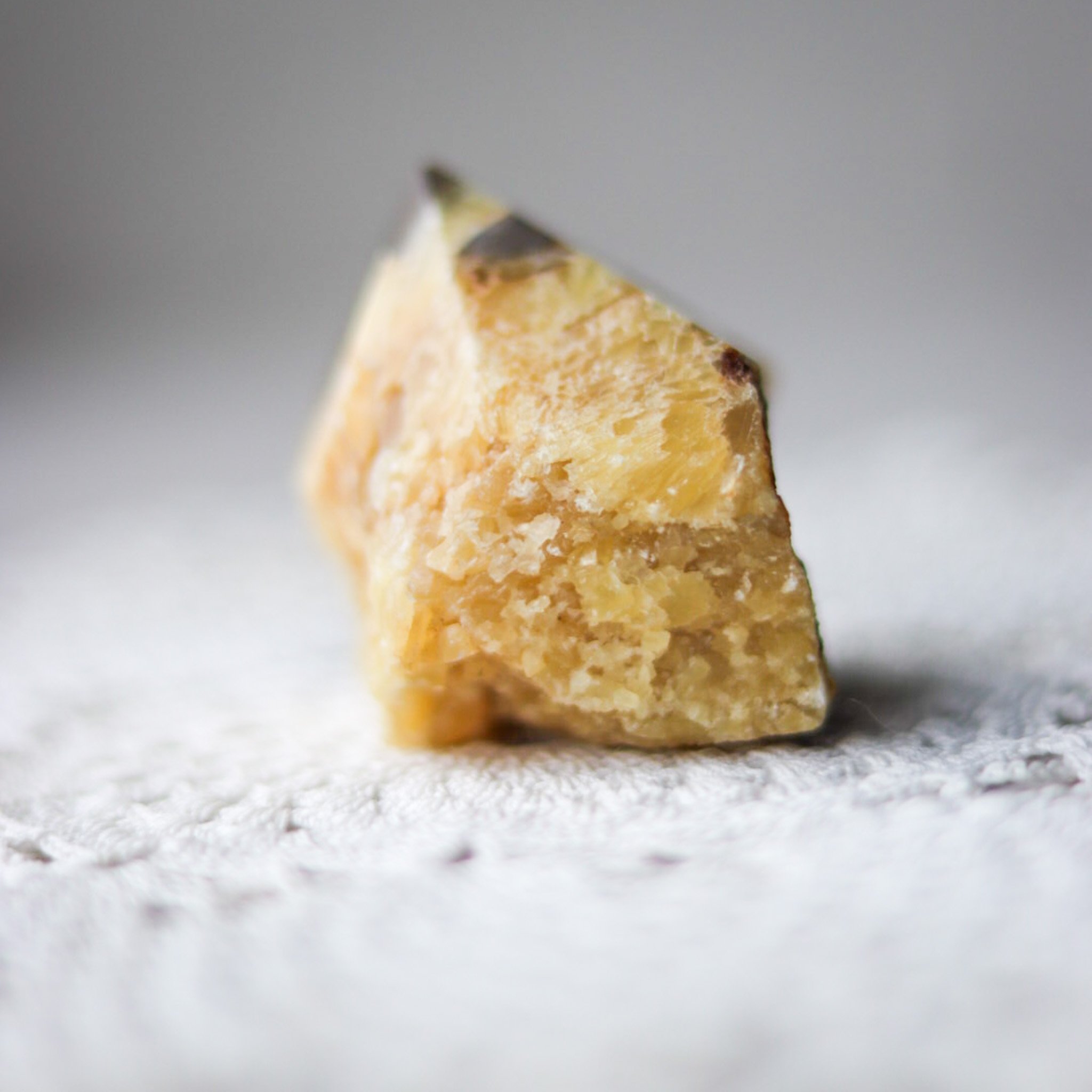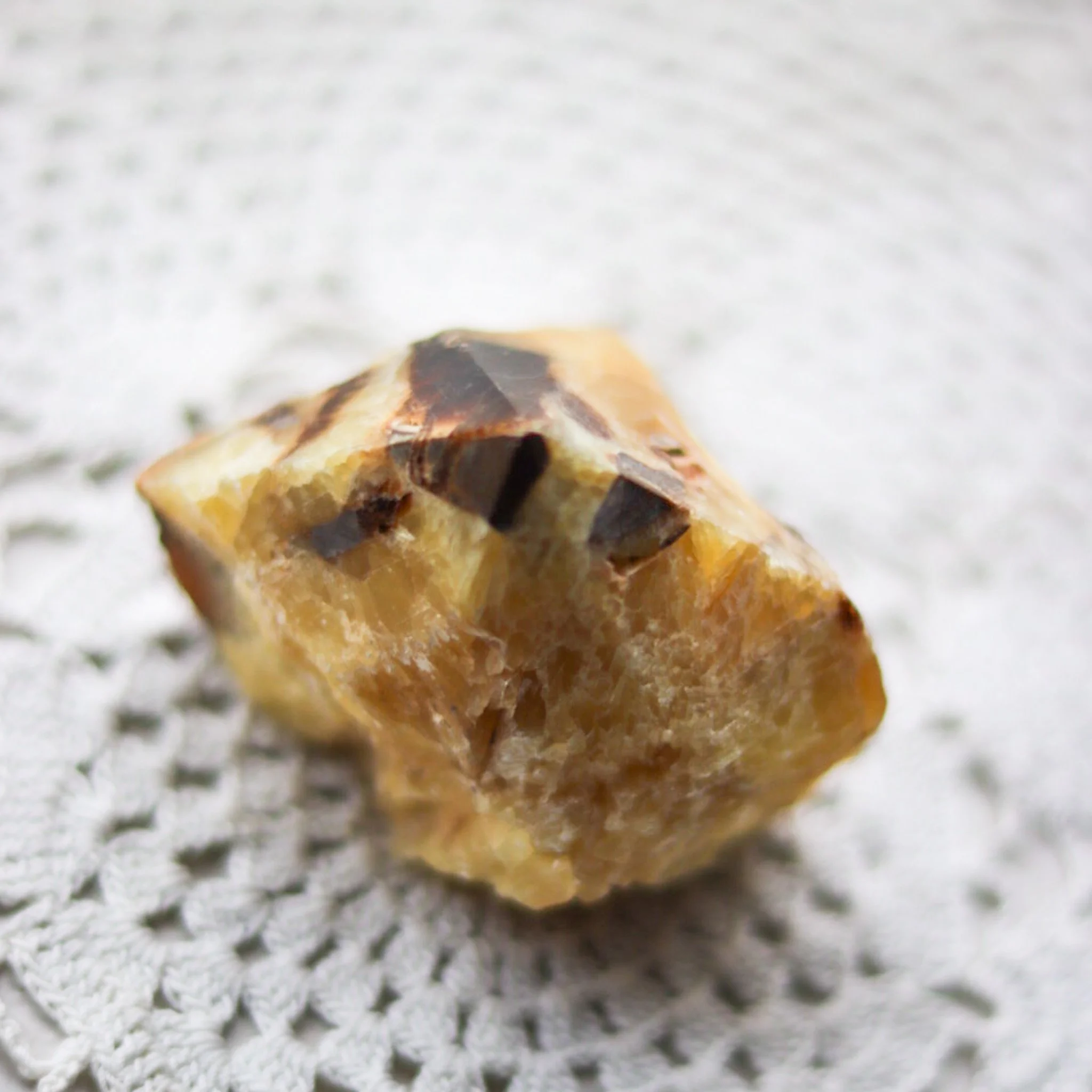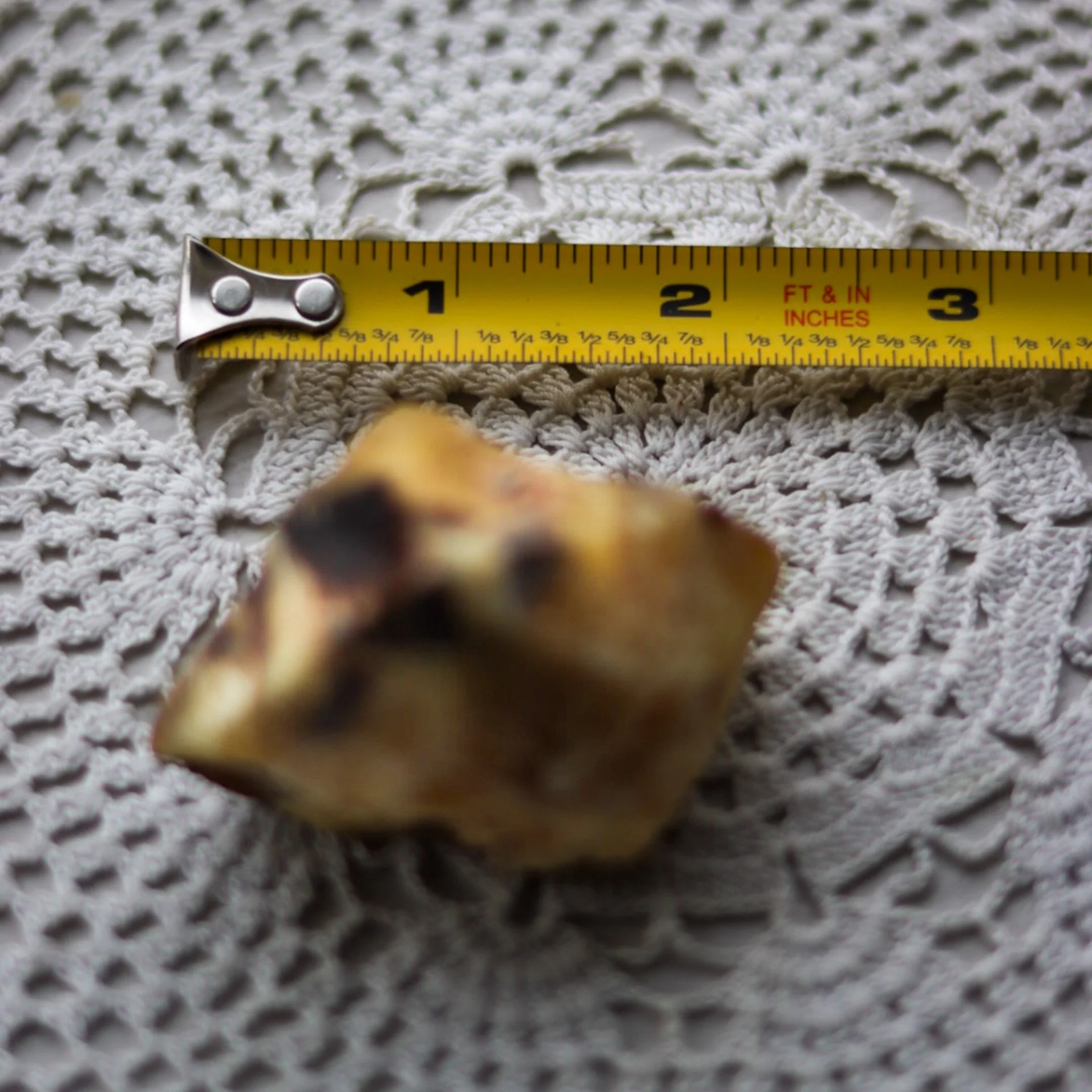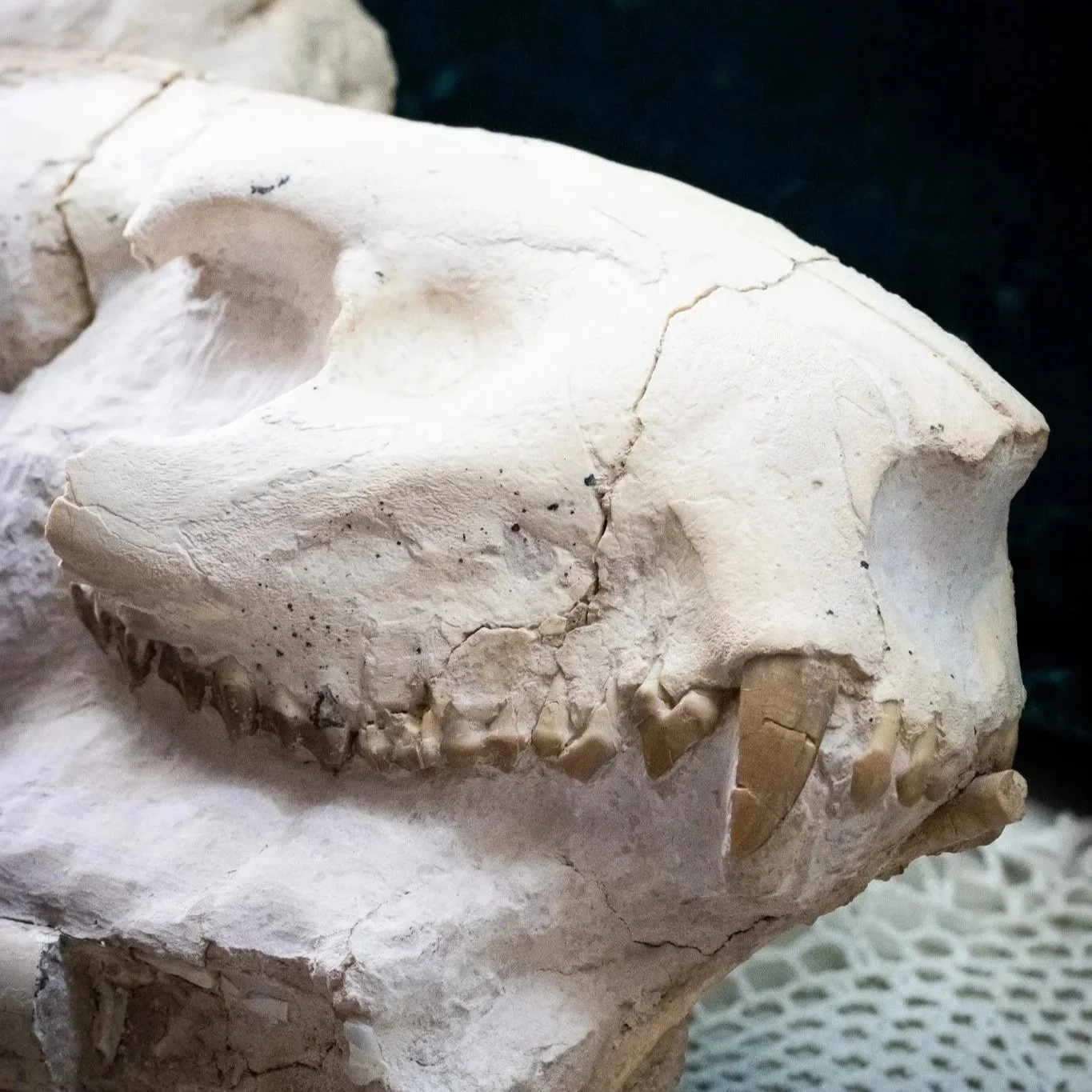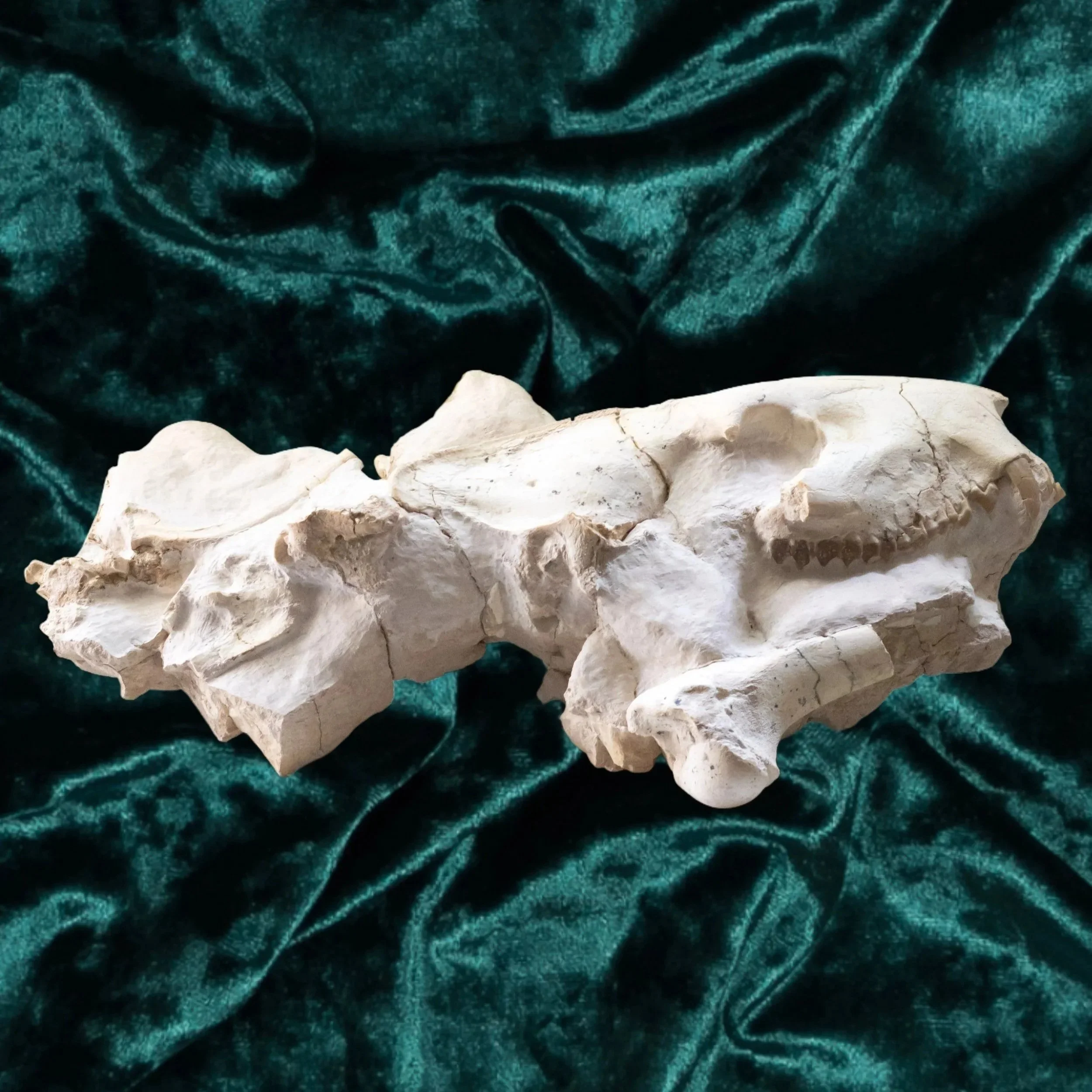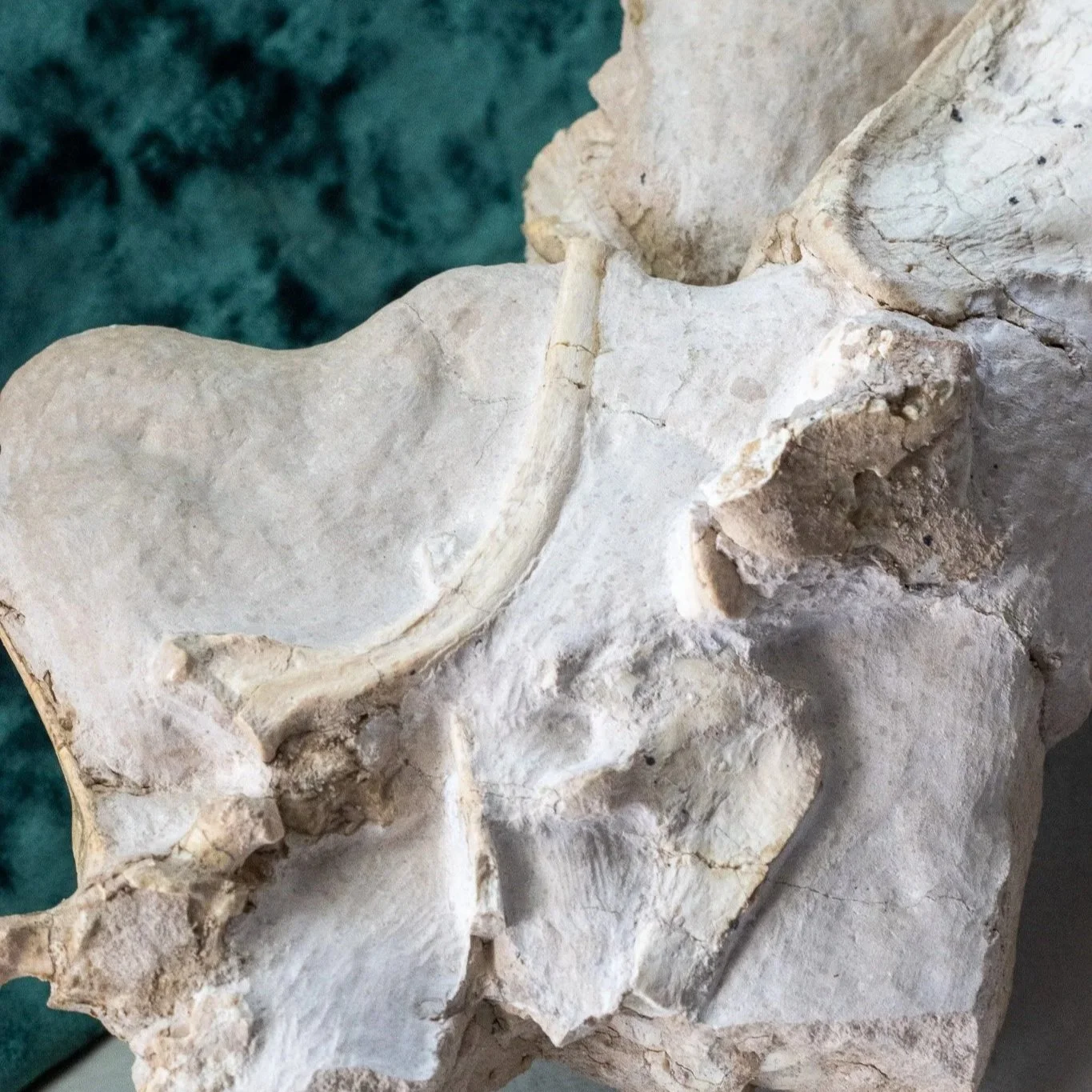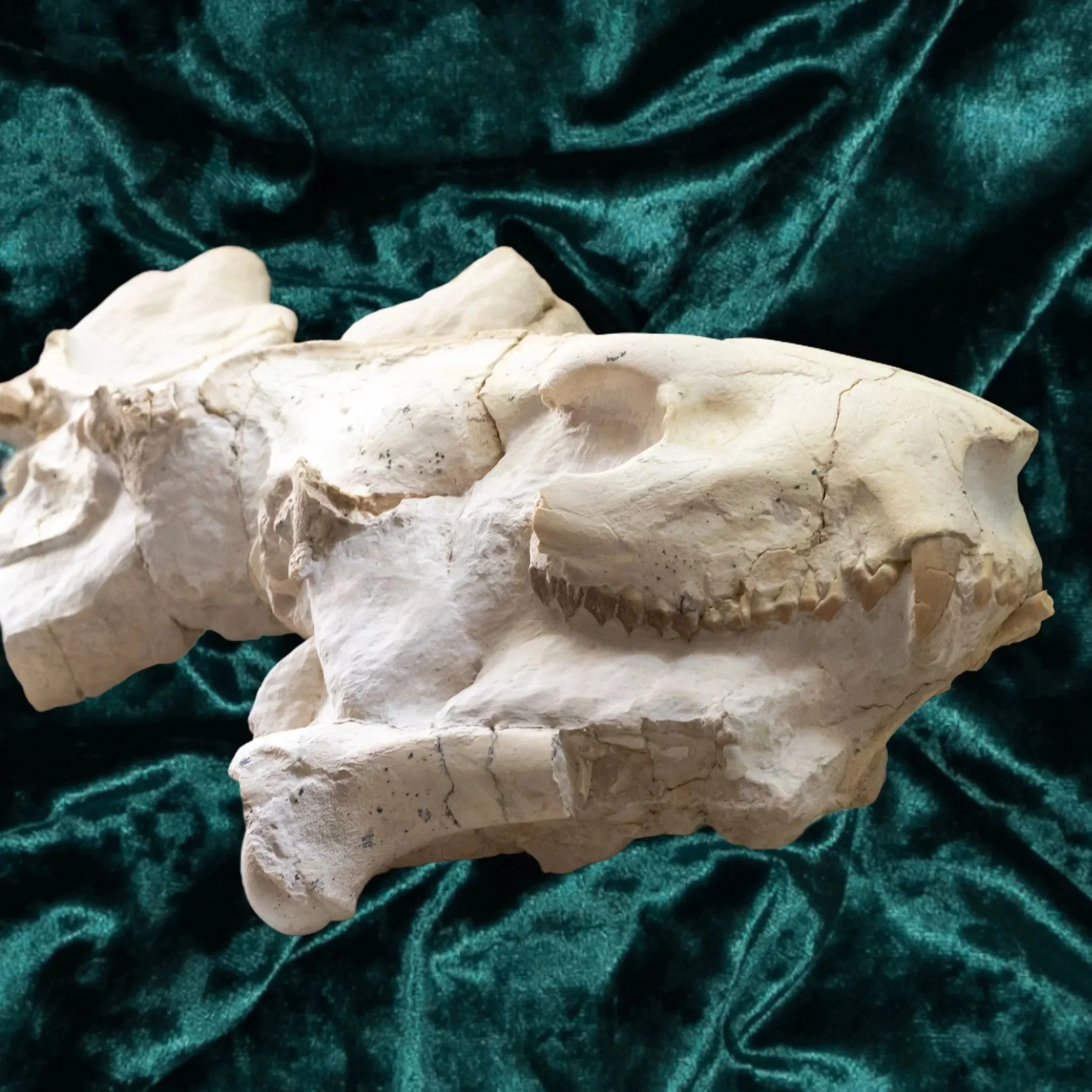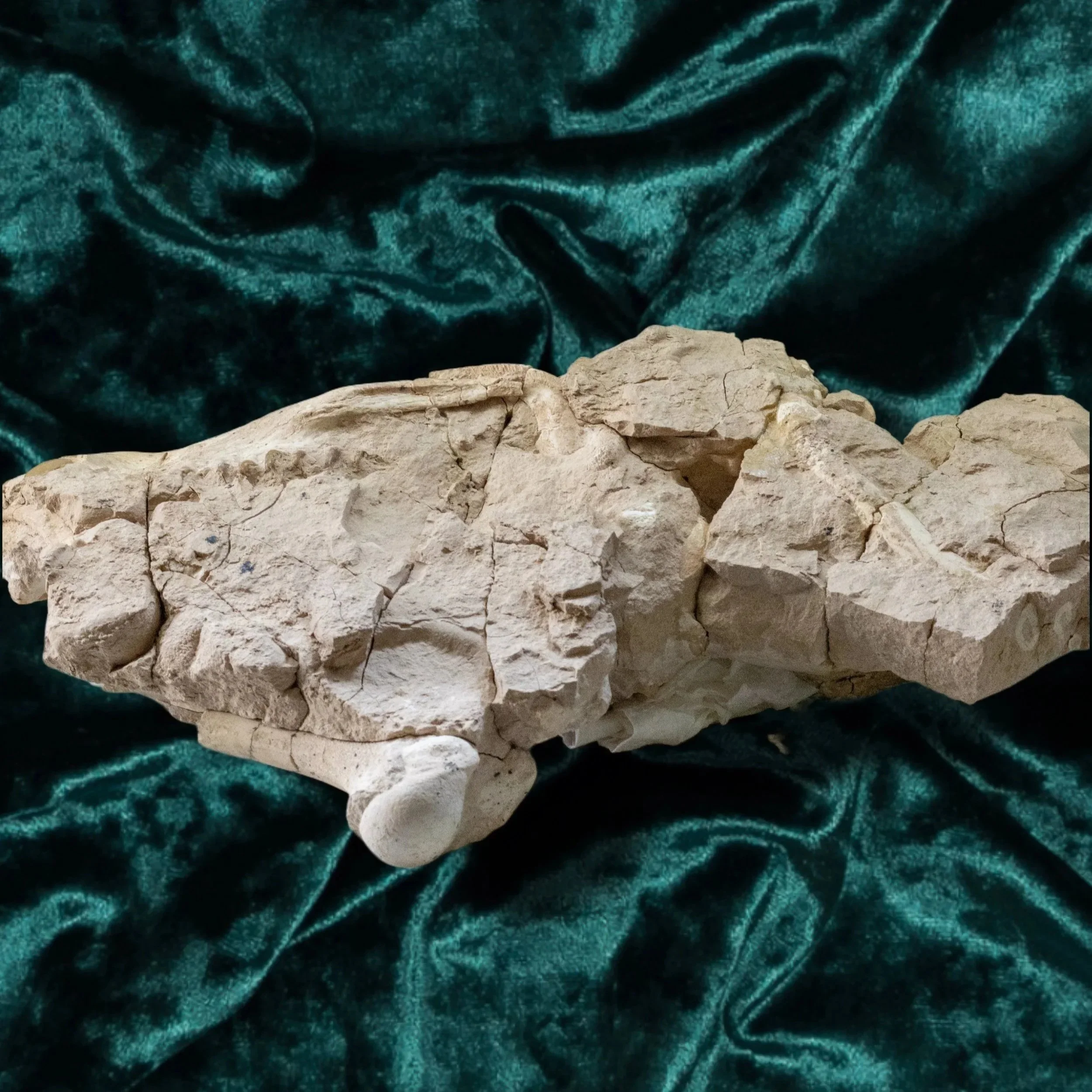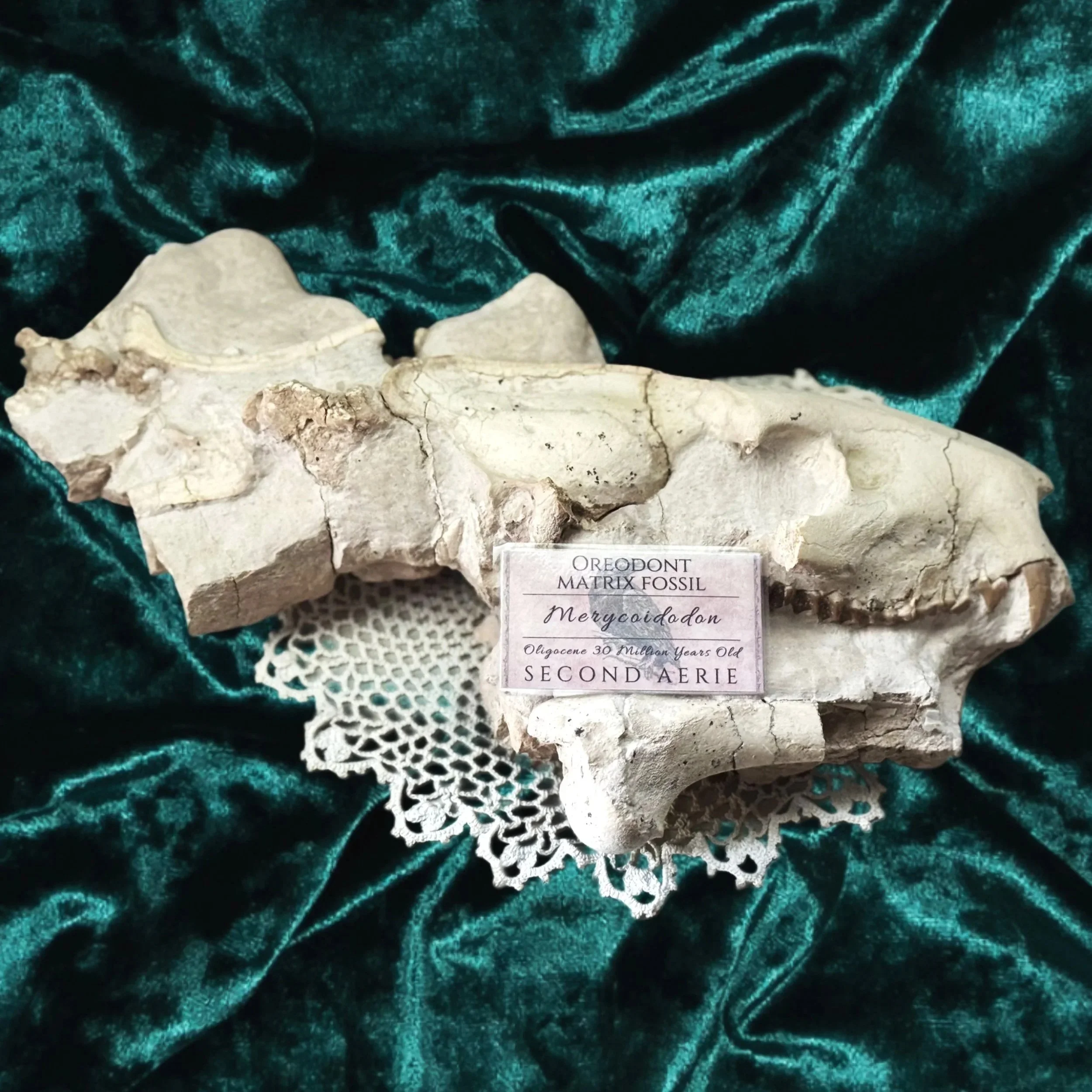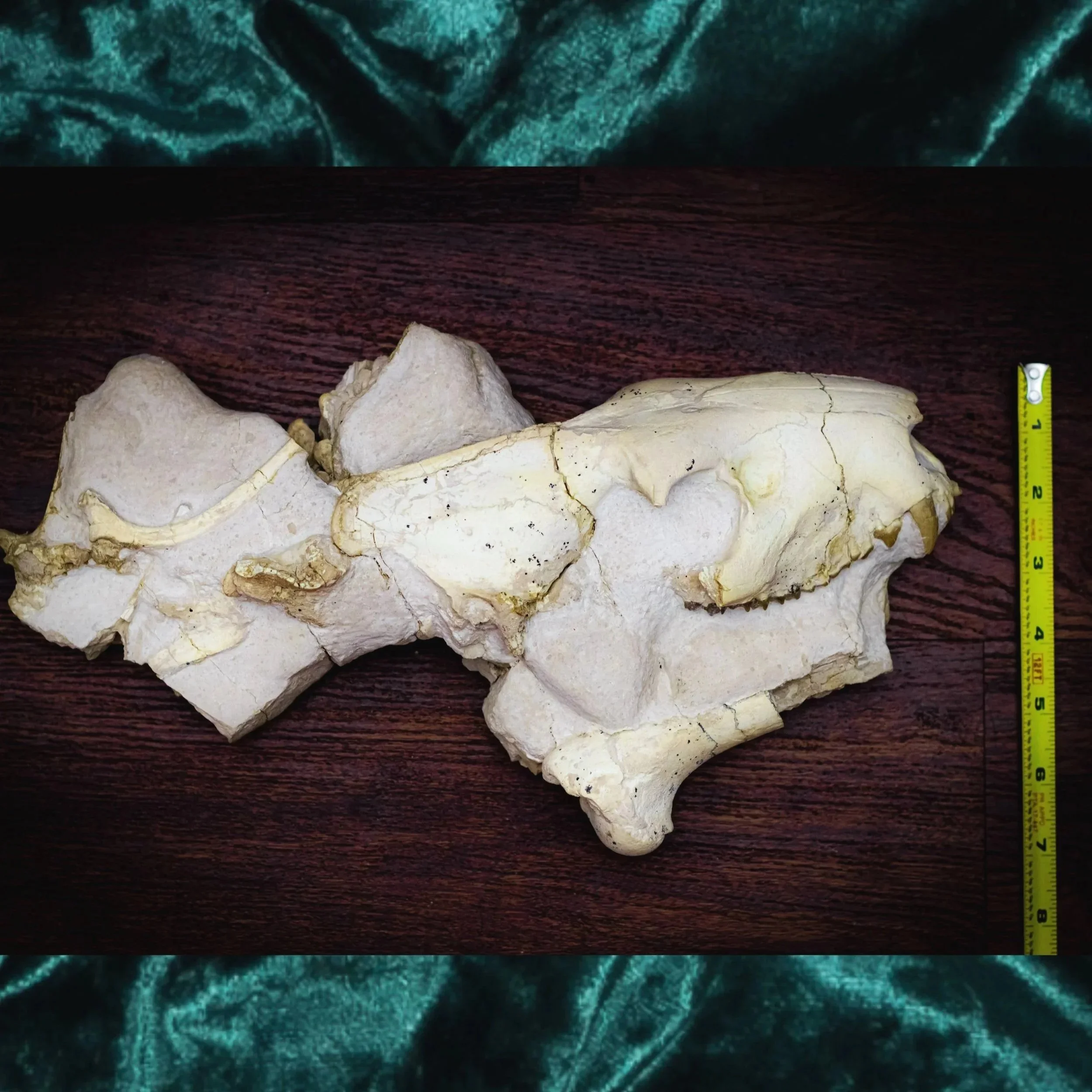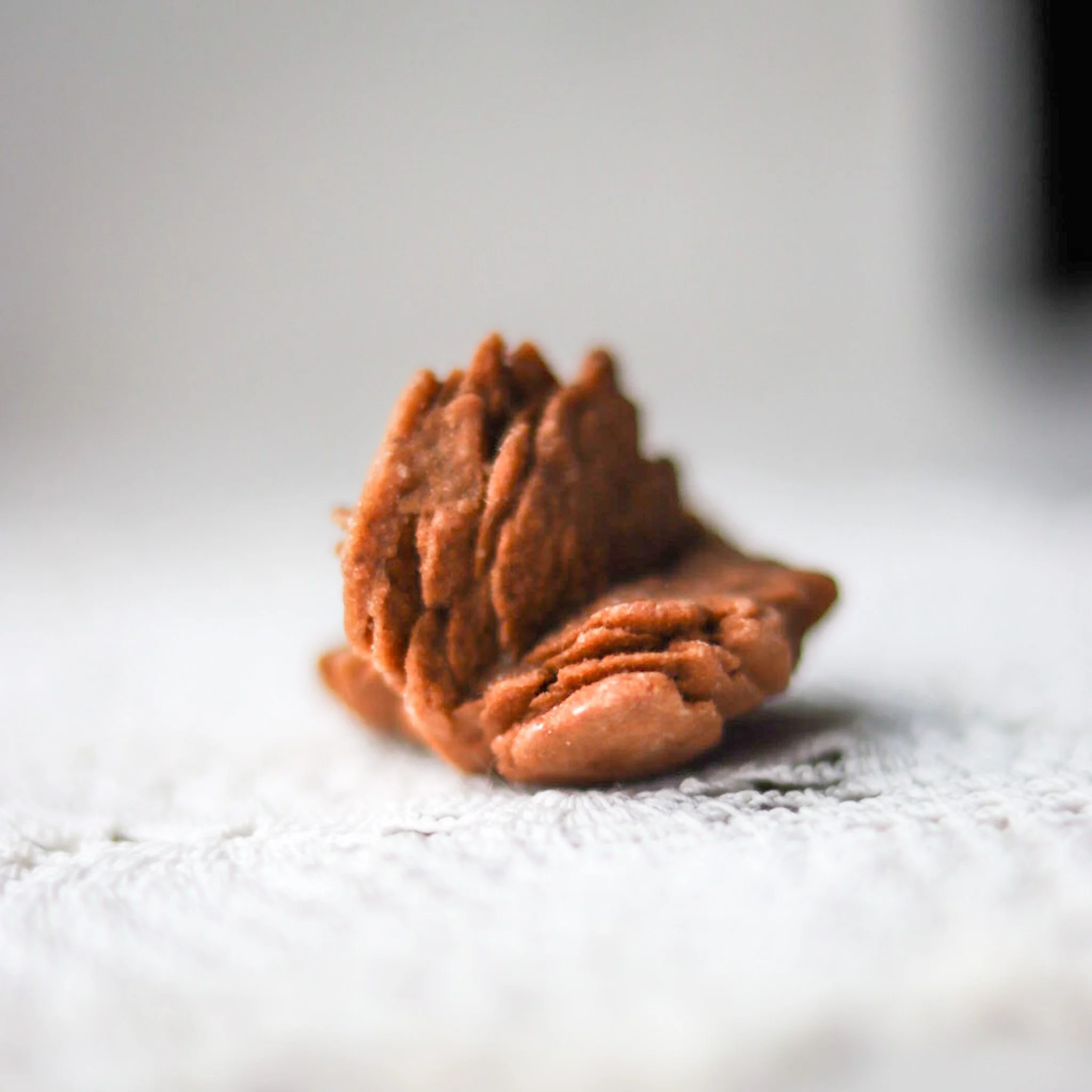 Image 1 of 5
Image 1 of 5

 Image 2 of 5
Image 2 of 5

 Image 3 of 5
Image 3 of 5

 Image 4 of 5
Image 4 of 5

 Image 5 of 5
Image 5 of 5






Barite Rose Mineral
Reddish barite roses are natural mineral formations that resemble a rose and are composed or barite crystals. The reddish color is caused by an inclusion of the mineral hematite. These formations often contain sand and are most famously associated with the Garber Sandstone formation in Oklahoma, where they were officially designated the state rock in 1968.
Composition: They are composed primarily of barite, a barium sulfate mineral. They also contain angular quartz sand and a small amount of hematite, which gives them their reddish color.
Formation: The "roses" form when groundwater carrying barium and sulfide migrates through sandstone. As the water's chemistry changes, barite crystals precipitate, growing in a radial, rosette pattern around the sand grains.
Appearance: They look like a rose in full bloom, with radial blades of barite acting as petals. They can range in size and are often found as individual specimens after weathering detaches them from the surrounding rock.
Location: While barite roses can be found in other locations, they are most strongly associated with Oklahoma's Garber Sandstone formation. The state rock rule allows individuals to collect up to six per day.
Meditation and healing: Barite is used in meditation to promote calm, enhance intuition, and connect with one's "higher self". It is also associated with healing properties, such as detoxification, supporting recovery from addiction, and bringing balance.
Spiritual and emotional support: Barite roses are believed to inspire patience, creativity, and motivation, while helping individuals detach from old patterns and encouraging self-expression.
Reddish barite roses are natural mineral formations that resemble a rose and are composed or barite crystals. The reddish color is caused by an inclusion of the mineral hematite. These formations often contain sand and are most famously associated with the Garber Sandstone formation in Oklahoma, where they were officially designated the state rock in 1968.
Composition: They are composed primarily of barite, a barium sulfate mineral. They also contain angular quartz sand and a small amount of hematite, which gives them their reddish color.
Formation: The "roses" form when groundwater carrying barium and sulfide migrates through sandstone. As the water's chemistry changes, barite crystals precipitate, growing in a radial, rosette pattern around the sand grains.
Appearance: They look like a rose in full bloom, with radial blades of barite acting as petals. They can range in size and are often found as individual specimens after weathering detaches them from the surrounding rock.
Location: While barite roses can be found in other locations, they are most strongly associated with Oklahoma's Garber Sandstone formation. The state rock rule allows individuals to collect up to six per day.
Meditation and healing: Barite is used in meditation to promote calm, enhance intuition, and connect with one's "higher self". It is also associated with healing properties, such as detoxification, supporting recovery from addiction, and bringing balance.
Spiritual and emotional support: Barite roses are believed to inspire patience, creativity, and motivation, while helping individuals detach from old patterns and encouraging self-expression.
